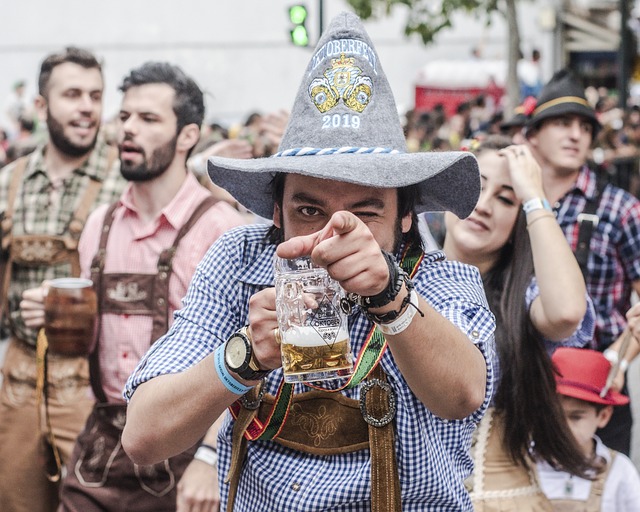Of all the beer and wine festivals held globally, perhaps none summon visions of overflowing steins, pretzels the size of plates, and people donning Bavarian dirndls and lederhosen quite like Munich’s epic Oktoberfest. If you plan to join the millions who flock annually to these iconic celebrations, read our guide covering the origins, need-to-knows, tips and traditions around the world’s largest Volksfest.
What are Oktoberfest’s Origins?
Oktoberfest beginnings date back to October 1810 when Crown Prince Ludwig married Princess Therese. The royal wedding celebrations in Munich culminated with a huge public festival open to all citizens featuring horse races, music and abundant food and drink to toast the happy couple. The festivities were such a hit that they became an annual tradition replicating those original celebrations.
When and Where is Oktoberfest Held?
Despite its name, Oktoberfest takes place mostly in September, beginning in the middle of the month and lasting 16-18 days until early October on the first Sunday of the month. The festivals transpire on the 42-hectare Theresienwiese fairgrounds in Munich, hence the locals referring to it as “Wiesn”. Millions attend the Wiesn every year, wearing Bavarian costumes and carrying the feast over to Munich’s beer halls and gardens.
The Famous Beer Tents – Which to Visit
The highlight at the Wiesn are the enormous festival tents, almost like temporary beer palaces. Each tent has a unique vibe and serves different brews alongside nibbles like pretzels, pork knuckles and schnitzel. The most famous tents include Schottenhamel for its jovial opening ceremonies, Hofbräu Festzelt for its party vibe drawing travellers, Augustiner Festhalle for its sweet brass band, and Hacker-Festzelt for its delicious smoked fish.
What About the Wine & Other Drinks?
While beer reigns supreme, you can find wine at Oktoberfest too! The Weinzelt wine tent run by the Münchner Weinzelt association offers German vintages like Silvaner, Zweigelt and fruity Bacchus paired with cheese and meats. Or try the historic Winzerer Fähndl tent, host to a special vineyard festival, music acts and glasses of Riesling and rosé. Of course, don’t pass up the beer – brands like Paulaner, Spaten, Löwenbräu and Hofbräu flow steadily.
Oktoberfest Food & Snacks
Beyond washed-down pretzels, no Oktoberfest experience is complete without indulging heartily in traditional German fare! Fill up on specialties like pork knuckles, wurst sausages, rotisserie chicken, schnitzel sandwiches, obatzda cheese spreads, roasted nuts and giant Bavarian-style Brezels. Take breaks from the beers with sweets like strudels, gingerbread hearts and sugared almonds.
What are the Traditions & Customs?
Expect a festive atmosphere with brass oompah bands, locals and visitors clad in dirndls and lederhosen, waving arms linking while swaying and singing together on the benches – making for memorable photos! The first keg at noon on opening day is tapped with cheers of “O’zapft is!” meaning “it’s tapped!”. Song and camaraderie continue into the night as tents close around 11 pm.
Insider Tips
Book accommodations close to festival grounds months in advance. Tents open between 9 am and 10 am daily. Grab a spot early as they fill fast, or make reservations. Bring cash for entry fees, food and tipping. Dress code calls for traditional garments but not required. Avoid visiting on the opening Saturday – extremely packed! Above all, come ready to sing along, make friends over steins and fully immerse yourself in the festivities of this one-of-a-kind festival.
So grab your lederhosen and dirndl dresses and get ready for memories in the making at Munich’s iconic Oktoberfest! Willkommen!
